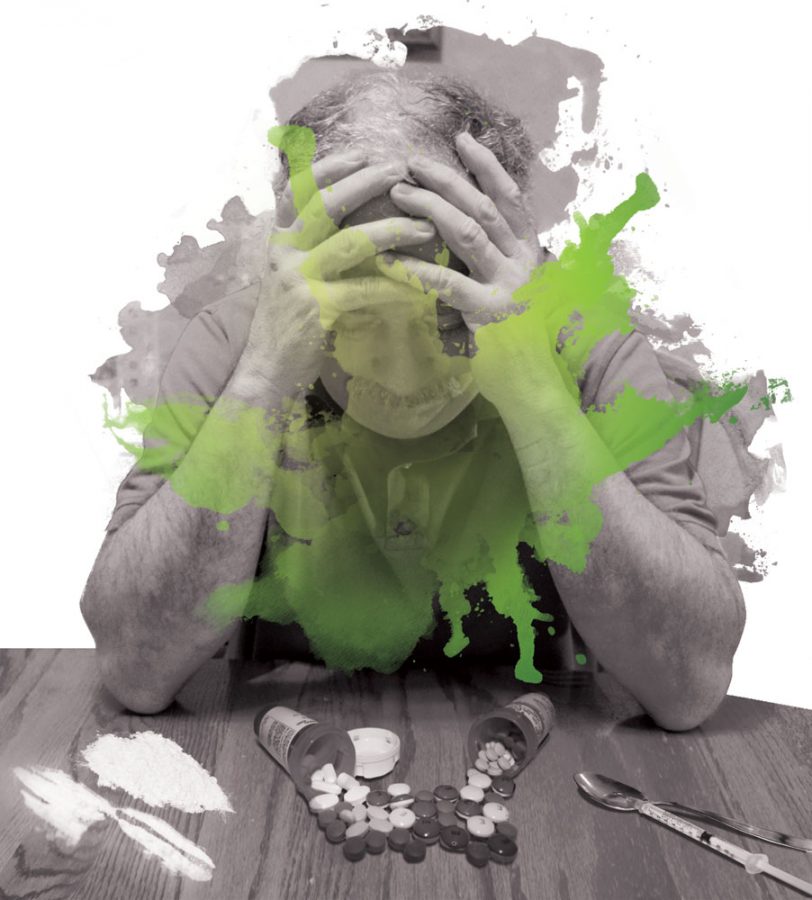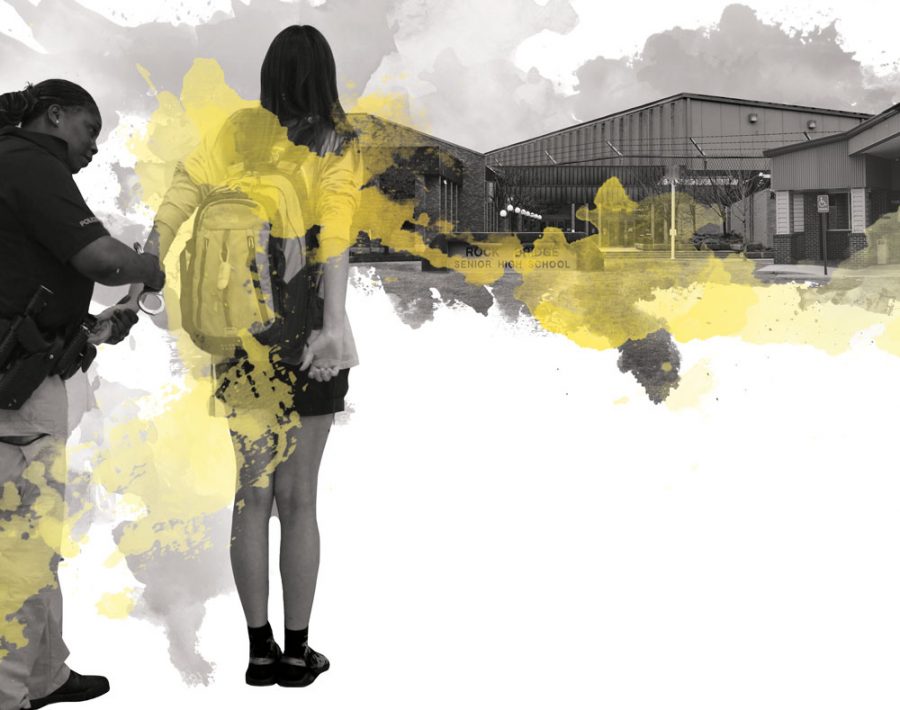[heading]Sixth in a six-part series covering the criminal justice system[/heading] [highlight background=”#2bb673″]#FreeJeffMizanskey[/highlight] On the surface, there doesn’t seem to be much that separates Jeff Mizanskey from other men his age. His favorite thing to do is spend time with his family, from nieces and nephews to great-grandchildren. He’s more comfortable with phone booths than with the touchscreen contraptions that have brought ubiquity to a new level.
Still, there are signs that Mizanskey hasn’t led a typical life. While most 61-year-olds have watched their grandchildren grow up, Mizanskey is just now learning some new faces. Others have had time to ease into the digital revolution; Mizanskey has had to manage a few decades of change within the span of seven months.
After all, there are no iPhones in prison.
Until August of 2015, that was where Mizanskey had spent more than 20 years of his life; locked behind the walls of a penitentiary, with murderers and cockroaches for company. He had not killed or raped or physically harmed anyone; his only crime was possessing marijuana.
But in a way, he got lucky. The 20 years he served pales in comparison to the life sentence he received.
“I gave up on the human race. I was sitting in prison for life for the non-violent crime of marijuana and you got these guys raping kids and murdering and they’re in and out,” Mizanskey said. “This is a country that I volunteered for the military for and I was really losing faith.”
Mizanskey was sentenced to life without parole under Missouri’s “prior and persistent drug offender” statute. His first strike came in 1984, when he sold an ounce of marijuana to an undercover informant. Seven years later, police discovered a few more ounces while raiding his house. That marked strike two.
Then, in December of 1993, he drove his friend Atilano Quintana to a sting operation masquerading as a drug deal. Mizanskey’s only role was behind the wheel, with Quintana later testifying that Mizanskey was not aware of his plan to purchase the seven-pound block of marijuana.
The courts decided Mizanskey had committed a felony. Strike three. He’s out.
When Mizanskey entered prison, President Bill Clinton was a few months into his second term. California had just legalized medicinal marijuana. His grandkids were still in diapers. Over the next two decades, Mizanskey established a routine.
Wake up every two hours when the guards come around to flash lights in each cell. Rise at 5 a.m. and head to work. Sand wood at the finishing shop until 4:30 p.m, for a wage of $0.71 an hour. Eat the slop in the dining hall. Wait to be counted when the guards make their rounds at the end of the day. Repeat.
“They’re making money off of every person in there,” Mizanskey said. “They’ll claim that they ain’t, but the treatment I’ve seen . . . I don’t know how it cost $57.72 a day to keep me, because the food wasn’t there. Water, electricity ain’t that much. We had 2,000 people in that prison; we would have paid off the debt crisis.”
Mizanskey could live with the bad food and the meager pay. What he couldn’t stand was the prison’s revolving door, where inmates who had committed violent crimes left for freedom only to return all too soon.

“Some of these guys who are raping women and children — they’re sick,” Mizanskey said. “I didn’t see any of them getting any help. I didn’t see nothing. I know they had to go to a little program for a year or so when it got closer to their time to be getting out, but I was seeing too many coming back too quickly. The system needs an overhaul.”
Given that his life sentence came without the possibility of parole, Mizanskey knew he would die in prison. His son Chris, only 13 years old when Mizanskey began serving his time, was determined to help his father escape that future. Chris Mizanskey’s goal started to become a possibility a few years ago, when he attended a National Organization for the Reform of Marijuana Laws (NORML) conference and met Columbia attorney Dan Viets.
Viets is known as one of Missouri’s leading crusaders in the campaign to legalize marijuana. In his roles as the state director of MO NORML, director of the Mid-Missouri American Civil Liberties Union (ACLU) and defense attorney specializing in drug crimes, Viets has certainly seen his share of noteworthy cases. Nevertheless, Mizanskey’s story took the seasoned lawyer by surprise.
“At first, I thought, ‘[Mizanskey’s case] doesn’t sound right.’ You hear things from defendants and their families who tell you things like that and a lot of times there turns out to be more to the story,” Viets said. “But by golly, when we checked out the situation, it turned out that Chris was exactly correct. That was the truth.”
Mizanskey had already exhausted his three appeals when Viets took over his case. With the court system no longer an option, Mizanskey’s only hope rested with the governor of Missouri, Jay Nixon. He had filed an appeal for clemency in March 2012 but had yet to receive a response.
His supporters wasted no time in launching a full-scale offensive. Show-Me Cannabis raised more than $10,000 to spread awareness of Mizanskey’s case, purchasing billboards near Sedalia and Jefferson City that decried his life sentence. State Rep. Shamed Dogan introduced HB 978, which would free any inmate serving life for non-violent marijuana crimes. Chris Mizanskey penned a change.org petition that spread quickly across social media platforms.
Mizanskey’s chances finally started to look promising. The number of names on the petition increased with each day and high-profile media outlets began covering his case. In February 2015, a group of Mizanskey’s fiercest supporters stood in front of the Missouri Capitol building and delivered the signatures calling for his release.
Chris Mizanskey, Viets and the nearly 400,000 people who signed the petition had done all they could. All that was left to do was wait.
[highlight background=”#2bb673″]A question of judgment [/highlight] In the moments that Mizanskey took his mind off of his clemency request, several lingering questions occupied his thoughts. Why was he, a man who had never committed a violent crime, sentenced to die in jail? What had he done that others convicted of similar felonies had not? How could this have happened?
“When I was locked up, there was a guy in here who got caught with 650 pounds [of marijuana]. He had six years. It was his third time he was caught,” Mizanskey said. “I ran into another guy who had seen stuff on TV about my case; he told me he got caught with 350 pounds. It was his fourth time. He got five years. It’s not just marijuana; it’s every crime.”
A judge’s ability to hand down different punishments for the same crime is known as judicial discretion. While the term’s clear-cut definition may seem unfair, professor Frank Bowman, a law professor at the University of Missouri-Columbia, said that the issue is immensely complicated and does not have a right answer.
“[Judicial discretion] has been a subject of debate as long as there has been criminal law. Should we give everyone who is caught in possession of, say, a kilo of cocaine the same sentence, even if one of the people we catch is a routine seller of cocaine and the other is a person who is just delivering the cocaine on one occasion as favor for a friend,” Bowman said. “You may not like a system in which one judge gives five years and another judge gives probation — you may think that’s inconsistent. But you may like it less if the law says, ‘Everyone is going to get five years.’”
In his long career as a defense attorney, however, Viets has seen judicial discretion play out in ways that fail to benefit the defendant standing before the bench.
“People usually get harsher punishment when they go to trial. They reward people for pleading guilty and punish people for going to trial; not just for being guilty, but for going to trial, because that takes up their time,” Viets said. “So judges like to say, ‘We’re not punishing people for going to trial, we’re just rewarding those people who confess their sins.’ Well, that’s the same as punishing people for going to trial. Jeff got punished for going to trial horribly. He got punished with life without parole.”
While Viets saw Mizanskey’s punishment as being clearly excessive, the Pettis County judge who levied the ruling was operating well within the law. Bowman, who has authored numerous papers on sentencing provisions, said that Missouri judges have particular leeway in their decisions.
“Here in Missouri, if you’re sentenced in state court, as long as the judge imposes a sentence below the statutory maximum, the Court of Appeals has little or nothing to say about it,” Bowman said. “In other states and in the federal government, there are guidelines that suggest to judges what they probably ought to do in cases in like the one in front of them. If the judge deviates too much from whatever the guidelines suggest, in certain cases the Court of Appeals can step in and say, ‘I think this sentence is excessive.’”
But how did drug crimes come to mean the possibility of life in prison? While a host of factors shaped the current state of U.S. drug policies, many point to a 20-year period beginning in the 1980s, when President Reagan declared a “War on Drugs”, mandatory minimum sentences entered courtrooms and America began her reign as the queen of incarceration.
[highlight background=”#2bb673″]The war on drugs[/highlight] In 1971, when Mizanskey would have been just a teenager, there were less than 200,000 inmates in U.S. state and federal penitentiaries. A mere 25 years later, the prison population count was closer to 1.2 million. Since then, that number has nearly doubled.
While the cause of such a meteoric rise in the prison population is not so easy to pinpoint, President Nixon’s crackdown on drug crimes is an oft-cited perpetrator, one that Viets sees as an undoubted example of government error.
“I have always felt strongly that marijuana prohibition is a major policy failure,” Viets said. “It’s something we’re going to look back on in a few years and say ‘How could we have been so stupid?’, as to make criminals out of people for marijuana. We’re going to look back on marijuana prohibition like today we look back on liquor prohibition.”
The root of the problem began in the late 1960s, when a liberal counterculture began to bloom. Members of this movement were known as hippies and were soon characterized by their liberal views on sexuality, outrageous clothing and frequent recreational drug use.
[quote cite=”Dan Viets”]We’re going to look back on marijuana prohibition like today we look back on liquor prohibition.[/quote] Some, like President Richard Nixon, didn’t take too kindly to the hippies. In 1971, Nixon named drug abuse as “public enemy number one”. Two years later, he established the Drug Enforcement Agency, which remains a prevailing element of his legacy. When Jimmy Carter took office following Nixon’s resignation in 1976, after running on a platform of decriminalizing marijuana, political panic over drug use died down.
Then, Ronald Reagan moved into the White House.
Soon after President Reagan’s inauguration in 1981, First Lady Nancy Reagan embarked on a national anti-drug campaign, touting the slogan “Just Say No.” The united message coming from the Reagan team was that drugs were not to be tolerated — which was reflected in the zero-tolerance policies that followed. Federal mandatory minimums came into law, with one of the harshest minimum sentences requiring all people caught with five grams of cocaine to serve five years in prison.
The year before Reagan was elected, there were approximately 15 inmates convicted for drug crimes for every 100,000 adults. By 1996, 15 had turned into 146, a tenfold increase. The U.S. now locks up its citizens at a higher rate than any other country in the world and has almost 25 percent of the total global prison population. In the sphere of incarceration, the United States is unparalleled.
“It turns out that it’s a really complex story. Part of the reason more people were in prison is because the rules for how much time people should get got more severe, that’s true. Part of the reason was also because there was an increase in drug law enforcement and drug sentences went up. But it turns out there was a bunch of other stuff going on too,” Bowman said. “A lot of what you see has to do with increased rates of prosecution, increased rates of violent crime and a whole complex set of decisions made by a whole lot of people, all of which added up to a staggeringly high rate of incarceration for this country.”
[highlight background=”#2bb673″]The long way home[/highlight] The petition to free Jeff Mizanskey turned one year old in February of 2015. No further responses emerged from the governor’s office. Mizanskey remained in prison.
Things started to look up when Rep. Dogan’s bill, specifically tailored for Mizanskey’s release, gained a committee hearing. Members voted 11-1 in favor of passing the bill and its likelihood of making it through the Missouri House looked good. But political pressure regarding the bill’s constitutionality and link to marijuana tied up processions — by the time the legislative session ended on May 14, HB 978 had failed to make it to voting. Once again, Mizanskey’s chance at freedom was gone.
Then, just two weeks later, everything changed.
On May 22, 2015, Gov. Nixon made the sudden announcement that he had commuted Mizanskey’s sentence to include the possibility of parole. This was the break Mizanskey’s team had been waiting for. This was his chance at a new life.
In early August, Mizanskey received news that he had been granted parole. In just a few weeks, he would walk out of the prison doors. He would hug his family and eat a decent meal. He would be a free man.
On the first day of September, a 20-year dream became a reality. Mizanskey stepped out of the Jefferson City Correctional Facility and faced a throng of people. He sported wire-frame glasses and a gray mustache. His black T-shirt read, ‘I’m Jeff & I’m free’.
Seven months have passed since Mizanskey’s release. In that time, he has kept busy with construction jobs and speaking engagements at marijuana conferences. He’s merging back into a world that never slowed down and is doing his best to keep up. But the joy of freedom doesn’t make it easier to forget the ripple effect of his long years in prison.
“[The most difficult part] was being away from my family,” Mizanskey said. “I could put up with everything else, but knowing that my family was suffering because I was locked up — I’m the one making money for the house and they went from a middle class family down to a poor family. They lost everything.”
While in prison, Mizanskey missed graduations, weddings, birthdays and deaths. He missed one-third of a life.
“My parents passed away while I was in there. I finally got to go see their graves last week. Because of these stupid laws that we have about marijuana, I wasn’t able to be there for any of that,” Mizanskey said. “I had grandkids who were babies in diapers [when I went to jail] and one of the youngest is already married. It’s what they lost because I wasn’t there. I wasn’t around to do the things that grandparents normally do.”
Now that he’s out, Mizanskey has come to learn that the prison doesn’t really say goodbye when the jumpsuit comes off.
“When you get put out on parole, you come out and you have to pay the parole board; you have to pay for a place to live. You have to pay to eat. People are gonna make money one way or another to put food in their belly and have a place to stay,” Mizanskey said. “Coming from prison, everything’s stacked against you finding a job anyway. The human nature is to survive and [ex-convicts] are going to do whatever they need to do to survive, unfortunately even if that means hurting someone else.”
He, however, has family and friends for assistance and picks up the odd job here and there. People have come up to him in the street and pressed $20 bills into his hand; he knows they just want to help, so he swallows his pride and accepts the money with a thank you. Unlike many who have recently left prison, Mizanskey has a support system and — most importantly — a purpose.
“I think about it every day, but all that does it give me drive to straighten out injustice. I’m not the only one locked up unjustly. There’s a lot of men in here for non-violent crimes that should be out on the street,” Mizanskey said. “Unfortunately, it’s not that way. So I’m going to use that to give me the strength to push on. Because as long as I can do it, one way or another, I’m going to advocate for justice for those guys who are in there who shouldn’t be.”
The problem doesn’t end with marijuana, however. During the course of the two decades that Mizanskey belonged to the prison system, he saw a fundamental imbalance in the scales of justice. The 20 years he lost can never be retrieved, but he hopes that the system can change for the better.
“It’s not just legalization [of marijuana] for me, it’s prison reform; it’s gotta happen,” Mizanskey said. “This is the United States for God’s sakes. You know, I love my country, but I’m afraid it’s let a lot of people down. I was one of them.”
Do you believe that drug sentences are too harsh? Why or why not?















































































